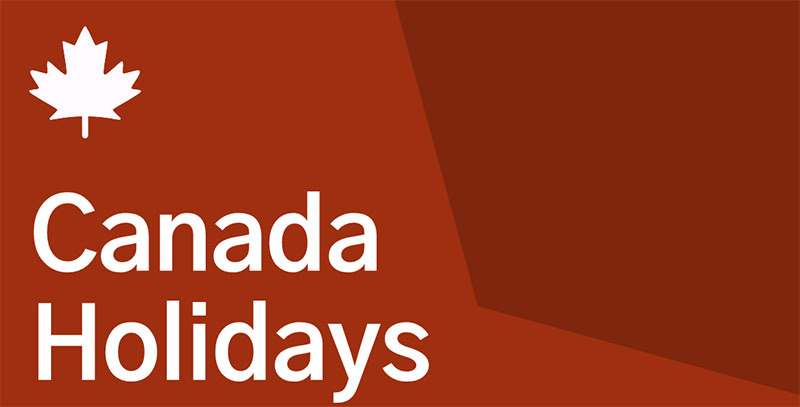This comprehensive guide gives an outline of the Statutory, Federal, and Territorial holidays booked for 2024, including their importance and provincial observances. Whether you are wanting to participate in lively nearby merriments or are interested about the legalities and customs encompassing these dates, this article fills in as your nitty gritty asset for understanding how Canadians the country over and in different regions celebrate consistently.
Canada Statutory Holidays 2024
Canada’s diverse culture and history are reflected in the country’s wide range of statutory holidays observed throughout the year. These holidays, otherwise called “stat holidays,” are assigned by government, commonplace, or regional regulations, and they furnish a vacation day with pay for most representatives. This far reaching guide frames the statutory holidays in Canada for 2024, including public, common, and regional observances.
Check Here:-
Canada TD Bank Class Action Settlement
What are Statutory Holidays?
Statutory holidays are lawfully perceived days on which most representatives are qualified for a vacation day with pay. The purpose of these holidays is to remember significant cultural, historical, or religious occasions. Representatives who work on these days frequently get “occasion pay,” which can be essentially as much as two times as much as their standard compensation.
Canada Statutory Holidays List 2024-25
In Canada, Statutory Holidays, generally alluded to as “Detail Holidays”, are explicit days perceived by regulation on which most workers are qualified for a took care of day. These Holidays are laid out by either the bureaucratic, common, or regional state run administrations and are expected to permit laborers to celebrate or honor huge social, verifiable, or strict occasions without the concern of financial penalty.
- Legal Basis
Statutory holidays are laid out by government, commonplace, or regional regulation, guaranteeing all workers are qualified for these days off. The regulations overseeing these holidays specify that specialists get customary compensation for the afternoon, which is a key right under Canadian work regulations.
- Compensation for Working
On the off chance that a worker chips away at a statutory holiday, they are normally repaid with extra compensation, generally alluded to as “holiday pay.” This pay is in many cases set at a top notch rate, like 1.5 times (something extra) or twofold the standard rate, contingent upon the purview and explicit terms of business contracts.
- Variability Across Regions
While a few statutory holidays are praised cross country — like New Year’s Day and Christmas Day — others are well defined for specific regions or domains. Family Day, for instance, is observed in Saskatchewan, Ontario, and Alberta, but it is not observed in all provinces.
- Sector-Specific Observances
Certain holidays may be noticed prevalently by government representatives. Federal employees, for instance, observe Easter Monday and the National Day for Truth and Reconciliation; private sector employees, on the other hand, observe a different holiday in accordance with the province.
Check Here:-
Canada FPT Deposit Payment Dates
List of Upcoming Canadian Statutory Holidays 2024
Here is an itemized table that incorporates the statutory holidays across Canada, alongside their recognition at the public and common levels.
| Holiday Name | Date Observed | Observance | Additional Information |
| Canada Day | Monday, July 1 | Statutory Holiday | Nationwide celebration |
| Nunavut Day | Tuesday, July 9 | Territorial Holiday | Observed in Nunavut |
| Orangeman’s Day | Monday, July 15 | Provincial Holiday | Specific to Newfoundland and Labrador |
| Civic Day | Monday, August 5 | Not a Statutory Holiday | Observed variably across provinces |
| Civic Holiday | Monday, August 5 | Provincial Holiday | Particularly observed in Ontario |
| British Columbia Day | Monday, August 5 | Provincial Holiday | Celebrated in British Columbia |
| Heritage Day | Monday, August 5 | Provincial Holiday | Optional general holiday |
| Discovery Day | Monday, August 19 | Territorial Holiday | Observed in Yukon |
| Labour Day | Monday, September 2 | Statutory Holiday | Nationwide observance |
| National Day for Truth and Reconciliation | Monday, September 30 | Federal Holiday | Nationwide observance, including federal regions |
| Thanksgiving | Monday, October 14 | Provincial Holiday | Observed in most provinces and territories |
| Remembrance Day | Monday, November 11 | Statutory Holiday | Observed in most provinces and territories |
| Christmas Day | Wed, 25 December | Statutory Holiday | Nationwide observance |
| Boxing Day | Thursday, 26 December | Provincial Holiday | Statutory in some areas, optional in others |
| New Year’s Eve | Tuesday, 31 December | Provincial Holiday | Government holiday in Quebec only |
Check Here:-
CRA $445 Per Month Family Benefit
Cultural & Seasonal Activities During Holidays
Canadians frequently participate in different exercises in view of the time during these statutory holidays. For instance:
- New Year’s Day: celebrations and parties to invite the new year.
- Family Day: Ski excursions and winter sports are normal.
- Victoria Day: Marks the casual start of summer; barbecues and outside practices start.
- Labour Day: Celebrated as the informal finish of summer.
- Thanksgiving: Known for gatherings and turkey dinners, however some decide to select elective dinners as a sympathetic decision.
In addition to providing a break from work, these holidays encourage cultural expression and community bonding.
Final Words
Each statutory holiday holds unique importance, frequently connected with authentic or comprehensive developments. For instance, Victoria Day praises the birthday of Sovereign Victoria and is viewed as the informal beginning of summer in Canada. The National Day for Truth and Reconciliation is the newest Canadian holiday that pays tribute to the cultures and histories of Indigenous peoples. Other holidays are specific to particular regions. For example, not every province observes Family Day, and Nunavut Day and Orangemen’s Day are only observed in Nunavut and Newfoundland and Labrador, respectively.
